Experiences on a rail bike
Here you can read a few stories about the track
- Herborg station
- Former viaduct and memorial stone over Herborg’s old church.
- 1938 in snow and frost.
- Risdal step board
- The memorial for Søren Kirkegaard’s father’s birthplace
- Seeding station
Herborg Station
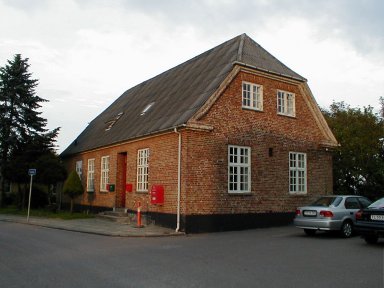
In 1933, DSB wanted the station to be handed over to a private manager, but the then station master could not be recommended a transfer to a larger station with traffic, he was retained in the position at Herborg station until around 1937.
In the years leading up to World War II, there were only 3 to 5 wagon loads of goods per week. The war turned that around very well. In 1943 there were always 54 wagons with goods from Herborg station. As many as six lignite manufacturers used the station as a shipping point. In 1940, 498 tons of goods were shipped, in 1942/43 approx. 47,000 tons and in 1948 6,000 tons from Herborg station. The lorries started rolling again after the war, which caused the volume of goods to drop to pre-war levels.
A former engine driver has said that before the end of passenger traffic in approx. 1950 drove a little faster to Herborg than the timetable demanded, so he had time to enjoy a cup of coffee at the station where the station manager was ready with the coffee pot.
After the cessation of traffic on the track, the station in Herborg continued as a delivery point for parcels and rail freight and mail.
Herborg station was sold around 1955. The freight forwarding was discontinued in 1972 and the postal forwarding ceased in 1975.
Former viaduct and memorial stone over Herborg’s old church
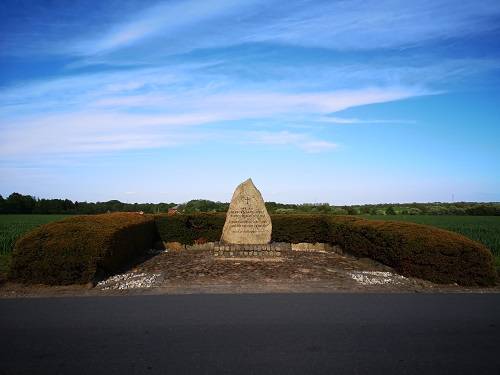
You probably don’t know it, but you have just driven past where there used to be a viaduct.
West of the track behind the field by the road to Sædding, there is a memorial stone for Herborg’s old church. The church was built in the 12th century. The Black Death, the plague that ravaged the country in 1349 is a likely reason why the heath in West Jutland became deserted and the church fell into disrepair. After several centuries of decay, the ruin was peeled down and the stones used for the road between Ringkøbing and Silkeborg, approx. 400 wagon loads. The memorial stone was erected in 1948.
https://www.kb.dk/danmarksetfraluften/midtjylland
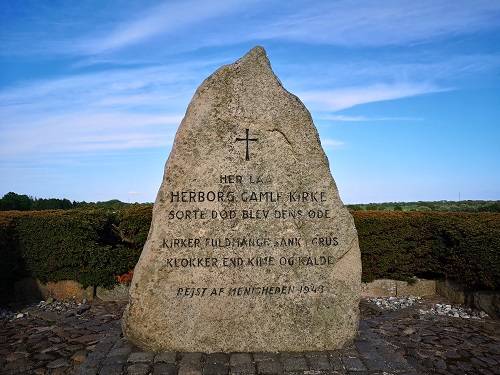
1938 in snow and frost
It was the day before Christmas Eve in 1938. There was more than enough snow. The first task of the day for the train staff in Skjern was to bring snowplows to the viaduct just inside Herborg, where the evening train from Videbæk was stuck. It went surprisingly easily and the train was diverted to Skjern. Later in the day, the dinner train was to leave for Videbæk. In addition, 1 lighthouse keeper, a locomotive driver and 7 snow throwers were required to take account of the heavy amounts of snow. The train departed on time from Skjern with goods and a number of passengers who were going home for Christmas.
It was a wise decision to be a good decision, the snow throwers came into use in several places to such an extent that most passengers stood up and continued the journey on foot. In the end, +9 there was only a lady and the patient in the back of the carriage.
On the hill up to Herborg, they could not advance, even though they made several attempts. The train was stuck and could neither go forward nor back. Crisis in the carriage, what about the two passengers? The locomotive driver went to Herborg where he managed to persuade a man to transport the passengers to Videbæk in a sleigh.
The two passengers were followed to Videbæk by the locomotive driver and were able to celebrate Christmas the next day. The 7 snow throwers had given up and gone back to Skjern. After some time the sleigh came back to Herborg where the lighthouse keeper kept the locomotive alive. The train driver had brought provisions from Videbæk. The locomotive driver brought 40 pieces of smørrebrød to two men, who were both very full.
The night came on so that two DSB people had to sleep in shifts. After all, it was necessary to keep the machine alive so that the water did not freeze to ice. It was not a great luxury for any of them.
The next morning the fireman awoke with a set when a terrible stench spread in the carriage. At first he thought the train had caught fire, but luckily it was only the train driver who was thawing his frozen boots. He had filled them with burning newspapers. History doesn’t tell if it helped, but it certainly didn’t smell very good.
On Christmas Eve at noon, help came from Skjern and the train was pulled back to Skjern with a delay of almost 26 hours.
Source: Railway historical yearbook 2005, Morten Flindt Larsen
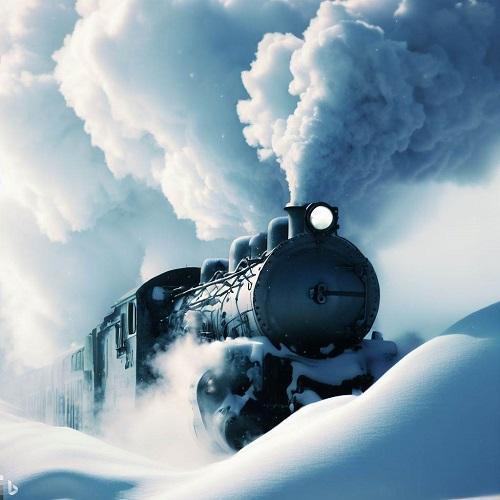
Risdal step board
Here east of the Risdal step board was a track that went to the lignite bed in Risdal. Today it is a planted and recreational area with lakes and forest. A good place for a little hike. In 1904, lignite was found in Risdal, where mining began in 1917. The lignite deposit supplied lignite to Copenhagen municipality and employed 200 men. Initially, the lignite was transported to the nearest railway in Borris.
After the opening of the Videbæk – Skjern line, the transport of lignite became much easier. A siding was built from the bed to the Risdal step board. It was loaded approx. 40 railway wagons with lignite – 6 to 16 tonnes per day which were transported to Copenhagen. With that amount of freight from Risdal, a DSB porter was employed at the track change.
The switch was closed in 1921 after the fuel situation had improved. In future, the transport of lignite took place via lorry or from Herborg station. Mining of lignite, which consisted mainly of cedar wood estimated to be 40 million years old, stopped completely in 1965.
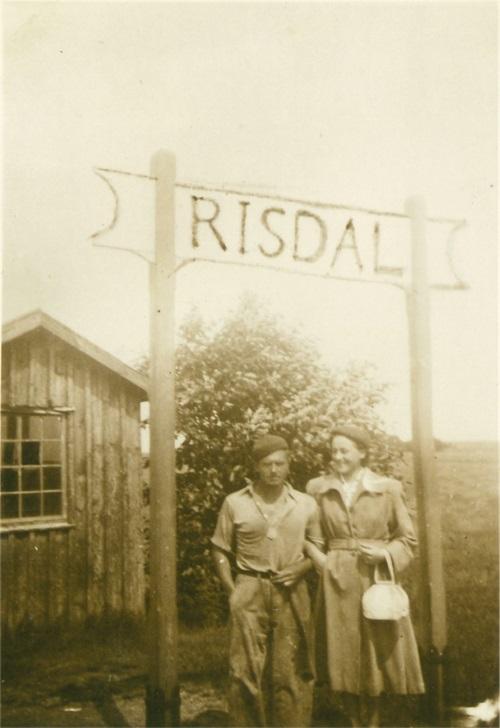
The memorial for Søren Kirkegaard’s father’s birthplace
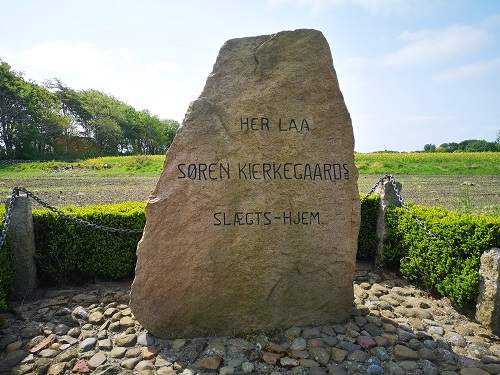
The view here is to Sædding Church.
The village of Sædding is known for the origin of the Kierkegaard family. Pastor Søren Kierkegaard’s father was born on a farm just on the other side of the church where today there is a memorial stone.
In 1840, Søren Kierkegaard visited Sædding to see where the father came from. Søren Kierkegaard came by stagecoach from Copenhagen to see the region that his father had told him about many times. It became a pilgrimage for him, to see where the family came from, to see the poor regions and to see the uncultivated harsh heath. Søren Kierkegaard lived with his aunt Else for 3 days, where he, among other things, visited the hill from where it is said that his father raised his fist and cursed God for the poor conditions he grew up under. He also participated in church services, but a sermon with him did not happen.
The local school teacher had made a song to be sung by his students when Søren Kierkegaard left with the post van. It didn’t go quite as the school teacher had planned, just before they were to sing, Kierkegaard grabbed the manuscript out of the teacher’s hand and jumped on the post van. Pupils, school teacher and audience were left wide-eyed.
Kierkegaar’s fame has brought many pilgrims to Sædding. Here, among a priest from the American church in Copenhagen, dr. Theol. T. H. Croxall.
In the town of Rækker Mølle there is a memorial room with a copy of Søren Kierkegaard’s desk and other things of interest. You will also find a folder with driving directions about the sights in the parish that can be visited. http://www.rkmolle.dk/9446-1_Mindestue
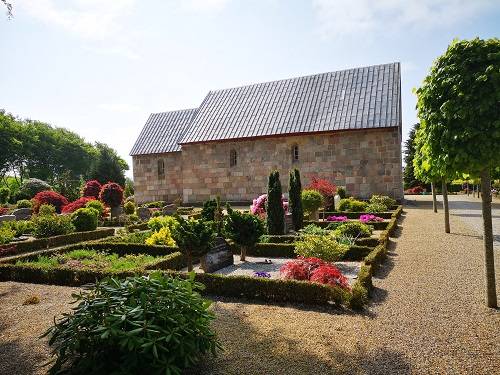
Seeding station
Sædding Station was built like the other two stations on the line, Kongsholm and Herborg station. In Sædding, however, there was a bypass track in addition to the loading track as at the other two stations. Today the station is painted white.
Sædding was initially only a stopping place and was “promoted” to a station in 1922. The station with the most tickets sold and transport of the largest amount of goods is not a completely wrong description. It was from here that the transport of lignite from Resdal was managed.
After passenger traffic ceased, the station was sold and the bypass removed.
There is a little story about the station master’s problems with woodpeckers, they built a nest on the station’s chimney. The station master persuaded an engine driver to take a gun with him if there weren’t too many travelers. One day with only one elderly lady as a passenger – Bang – and down fell the truck. The station master rushed to remove the bird from the platform before they were discovered.
Rækker Mølle is the nearest town. A small cozy town with its own brewery and a memorial to Søren Kierkegaard.
At the brewery, it is possible to visit and taste the excellent varieties of beer. You can read more about the brewery at Vestjysk bryggeri | Skjern | Rækker Mølle Bryghus A/S (rmbryghus.dk)
If you want to know more about Rækker Mølle and about the memorial room, you can read it at Rækkermølle – Mindestue (rkmolle.dk)

